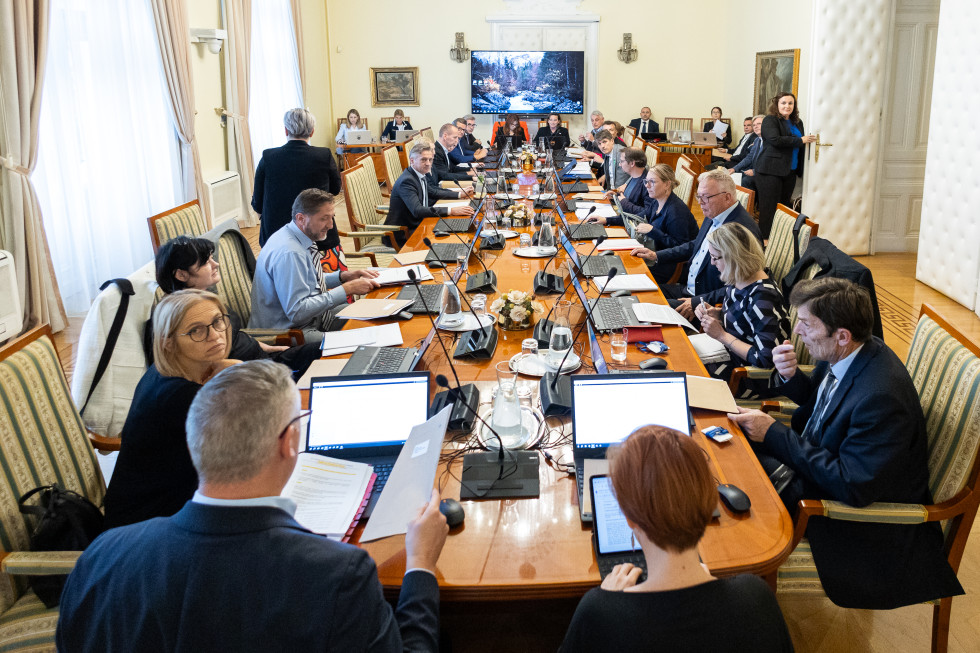126th regular session of the Government of the Republic of Slovenia
The Government of the Republic of Slovenia took note of work being done for the application to host a high-performance computer, i.e. an artificial intelligence (AI) supercomputer, in order to set up an AI Factory. It also adopted a decision on the establishment of a Government working group to monitor and consult on the application to the call for proposals, which will be led by Aida Kamišalić Latifić, State Secretary at the Ministry of Digital Transformation. Members of the working group are representatives of three ministries and external experts in supercomputing and AI. The preparation of documents required to apply to the call for proposals to host a supercomputer, which would be in Maribor, has been underway for some time. Financial resources have also been earmarked in the state budget. In parallel, the data centre construction project has been running for a year. By inviting Slovenia to apply to the call for proposal, the European Commission provided it with an opportunity to obtain an even more powerful supercomputer than the current Vega, so the application is extremely important for Slovenia. This project will significantly contribute to the competitiveness of Slovenia's economy. The first application deadline is 4 November 2024, and new deadlines will then follow every three months (the next one is 1 February 2025). Slovenia has already arranged for its participation in a consortium with regard to the application by the first deadline. By participating in this project, Slovenia will, due to the international dimension and system complementarity, increase its options for an independent application planned for the second deadline on 1 February 2025. EuroHPC joint undertaking's financial contribution will cover up to 50% of project costs, while Slovenia is to contribute EUR 50 million. The Government will issue a letter committing itself to paying the financial contribution should the application to the EuroHPC call be selected.
The Government also adopted the 2023 report on the management of Slovenia's public debt. In 2023, the general government debt decreased. At the end of 2023, it amounted to 68.4% of GDP, while at the end of 2022, it was 72.7% of GDP. Adequate liquidity reserves in the state budget or the Treasury Single Account balance contribute to a smaller share of net general government debt, maintaining it below 60% of GDP. In 2023, Slovenia borrowed to finance its state budget by issuing short-term and long-term debt securities (government bonds and treasury bills) and by taking an EU loan for the recovery and resilience plan. On 31 December 2023, the state budget debt, which represents the largest share of total debt, was EUR 39.8 billion, while the interest paid in 2023 amounted to EUR 684 million or 1.1% of GDP. At the end of 2023, municipal debt stood at EUR 1.1 billion, while the social security funds were not in debt.
The Government issued the Decree amending the Decree on the national site plan for the second track of the Divača–Koper railway line. The main goal of the plan is to double-tract the second (left) track of the Divača–Koper railway line. The planned railway line will enable local centres to connect to the relevant development links, facilitate economic development by maintaining jobs, facilitate regional and international cooperation, increase the accessibility and strength of economic ties and increase the integration outside the existing pan-European transport corridors. The construction of the right track is already underway in accordance with the construction permit issued pursuant to the Decree on the national site plan for the second track of the Divača–Koper railway line. The Decree's amendment provides for the arrangements required to build the new double track of the Divača–Koper railway line. A parallel (left) track is to be built in sections where it has not yet been planned under the applicable decree. New access roads necessary for the left track’s construction and operation are also planned. The existing track between the Prešnica bifurcation and Koper is to be abandoned. The existing Divača–Koper track is to be upgraded in the section between Divača and Prešnica bifurcation, where the existing Pula railway line starts. The works on the existing railway track are not covered by the amendments to the national site plan for the second track of the Divača-Koper railway line. All construction works in this section are to be carried out as maintenance works for public benefit within the railway area within the public railway infrastructure, and will not be carried out outside the area of the existing track.


